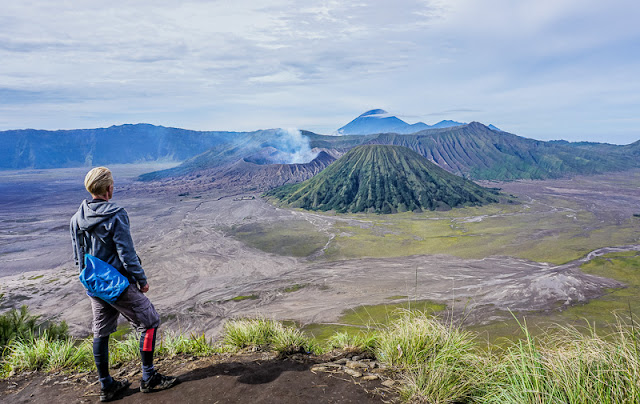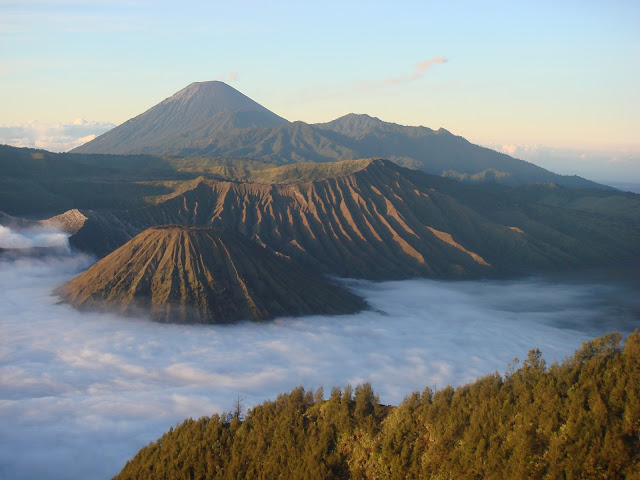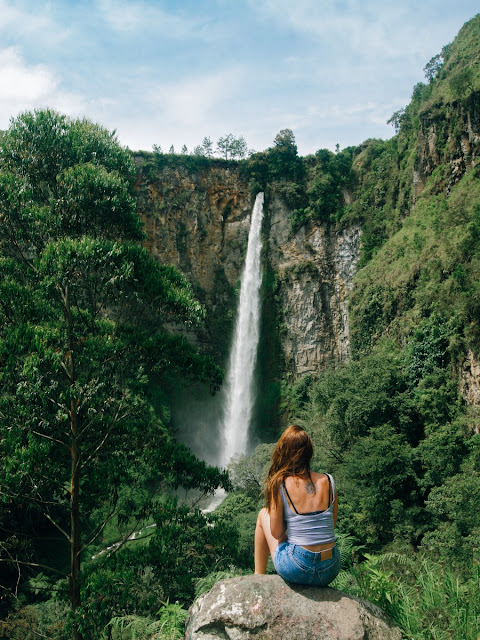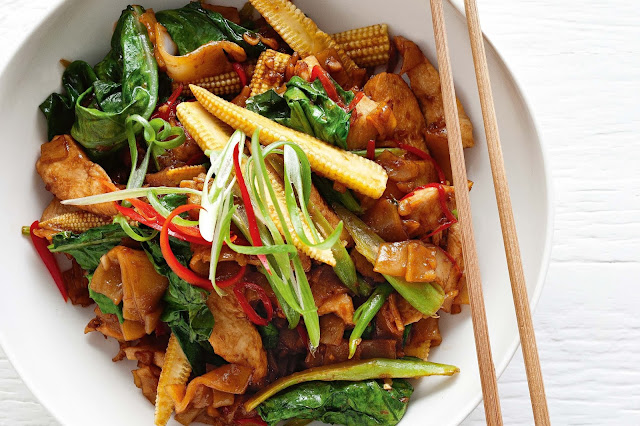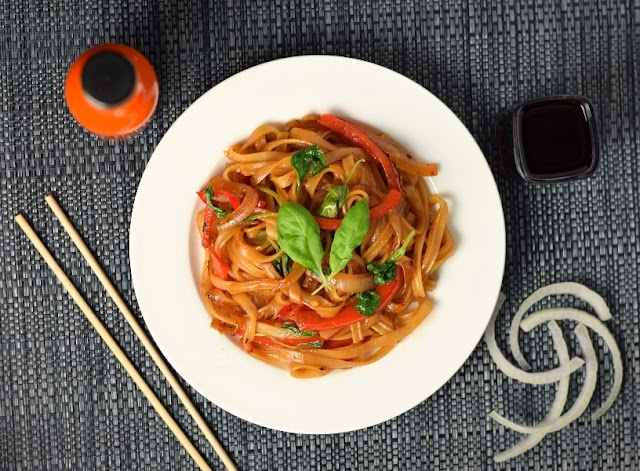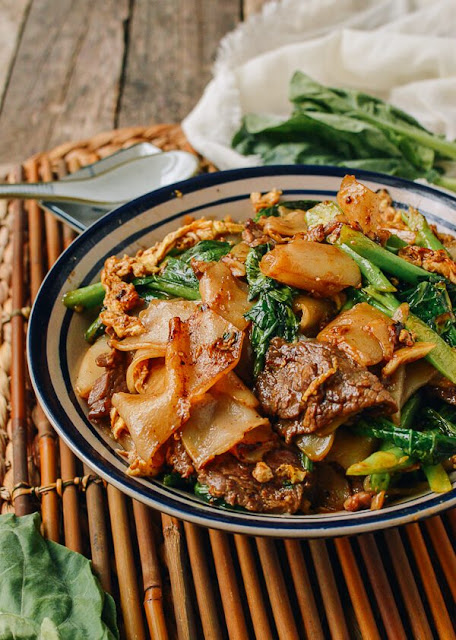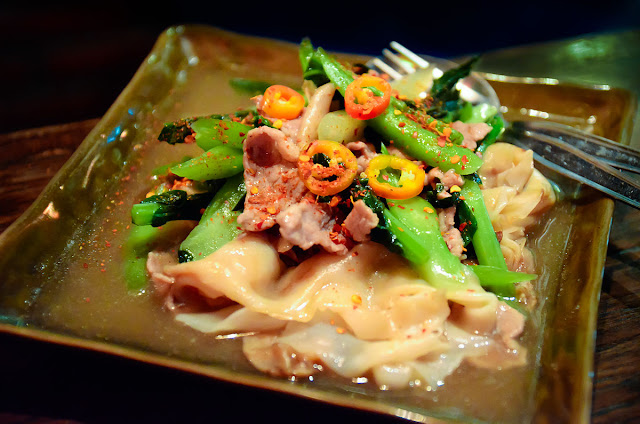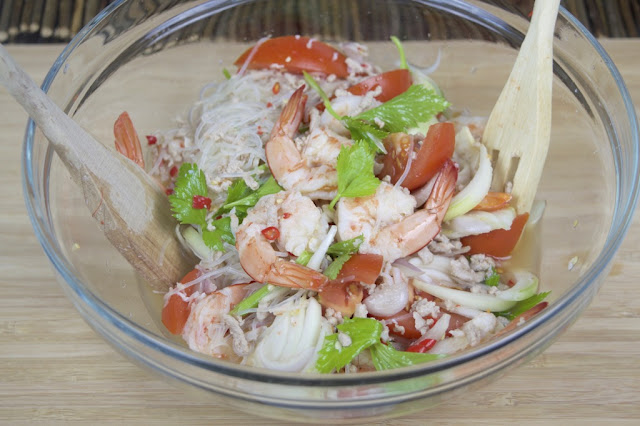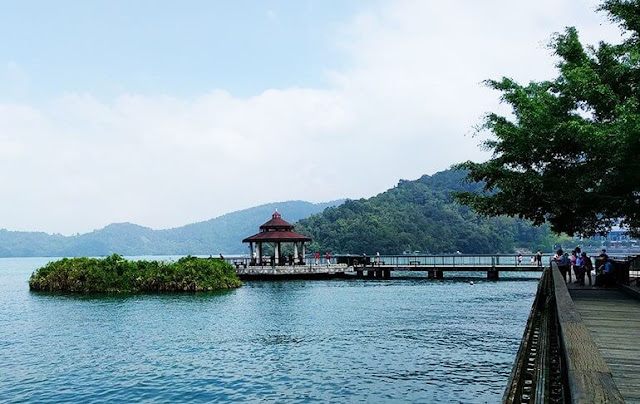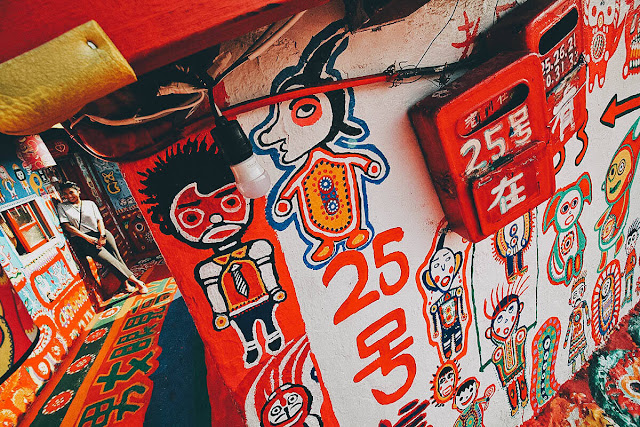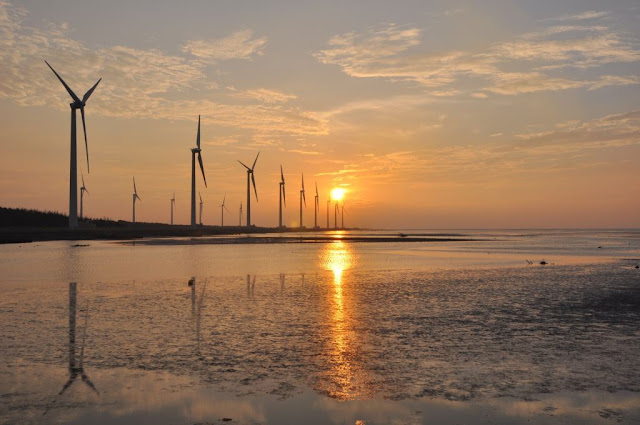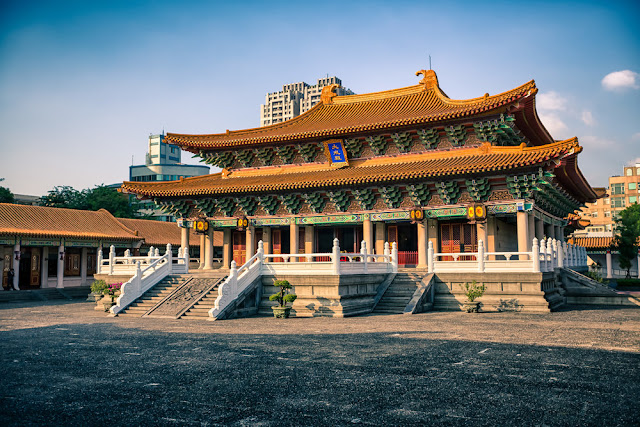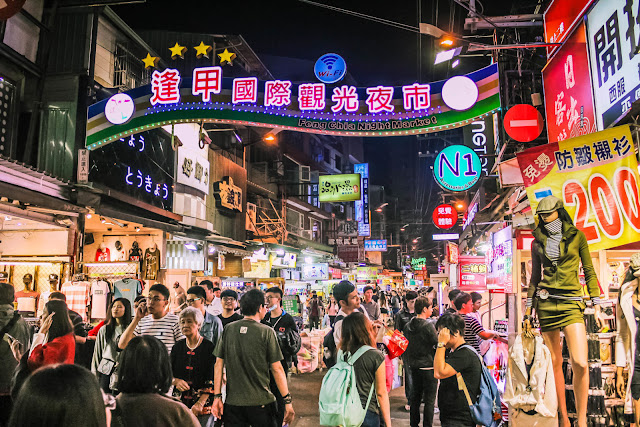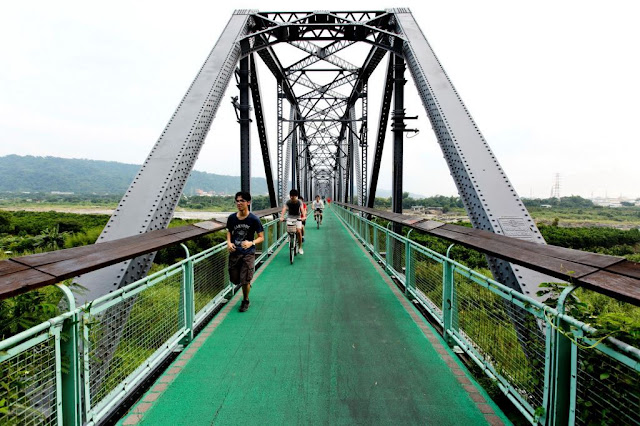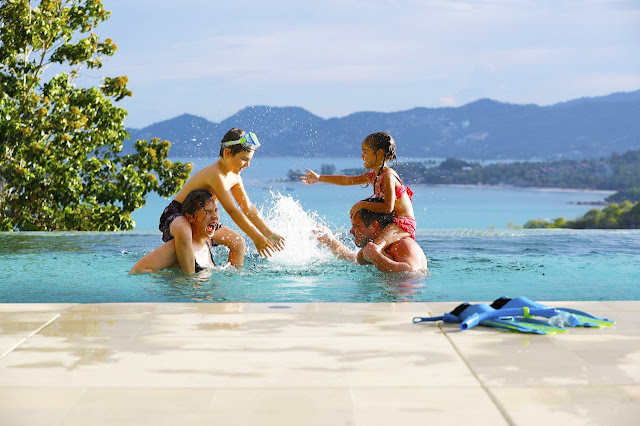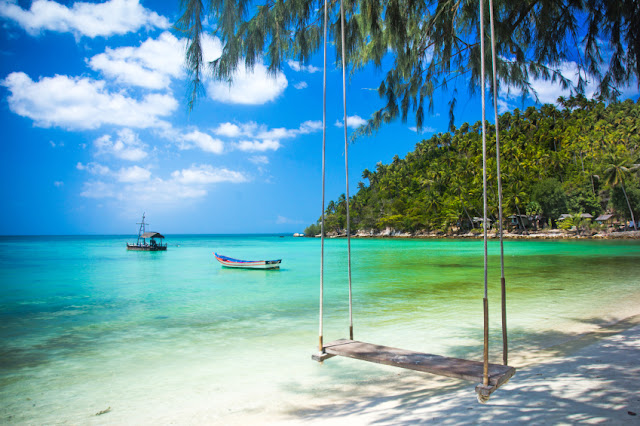Pad thai may be champion among
Thai noodle choices, but there are some excellent-and-delicious alternatives. The next time everyone at the table orders the usual, consider opting for one of these delicious dishes to get your fix and expand your repertoire.
Pad Kee Mao (Drunken Noodles)
Also called “drunken noodles,” pad kee mao is a popular stir-fried noodle dish in Thailand. Mao means "drunk" in
Thai, however, the dish can certainly be enjoyed without drinking too much Chang or Singah. But you may want one of thailand's big three beer choices if your pad kee mao was prepared authentically spicy!
Don't expect noodles similar to the ones found in pad thai or you may end up disappointed. Both implement rice noodles, but pad kee mao is usually prepared using wide noodles rather than the familiar width used in pad thai. The noodles are also surprisingly thick, creating a rubbery, chewy texture.
Lots of holy basil provides an herbal sweetness; soy sauce, fish sauce, garlic, and plenty of chili blend for an addictive flavor.
Pad kee mao is often prepared with vegetables such as broccoli, carrots, baby corn, peppers, and bean sprouts. For protein, you can choose from the common choices of tofu, pork, chicken, beef, or seafood.
So why the name "drunken noodles"? One running theory suggests that it's because the dish often varies from place to place; chefs toss in whatever vegetables they have left. Think of how someone with the munchies would return from a late night out and make an impromptu, filling meal by tossing together whatever is available!
As with all popular Thai noodle dishes, different eateries have their own interpretations. In general, if you order pad kee mao, expect a spicy, filling dish with more vegetables than usual.
Pad See Ew
Frequently enjoyed by locals in Thailand, pad see ew is a popular alternative to pad thai. While travelers are enjoying their pad thai, locals are often sat nearby enjoying pad see ew. Although both dishes implement rice noodles, the flavor and texture of pad see ew differ greatly from pad thai; don't expect many similarities.
This dish's namesake is a little less exciting than "drunken noodles" — pad see ew simply means "fried in soy sauce." Other transliterations seen on menus include pad sae ew, pad siew, and even pad si-io.
To prepare pad see ew, broad, chewy rice noodles are stir-fried dry, primarily in garlic with dark (thick) and light soy sauces. The preparation lends pad see ew a slightly burnt or charred taste; this is done on purpose. A skilled cook wields the wok well and dances along the fine line separating "charred" and "burned," pushing the edge but not overdoing it.
The
Chinese inspiration for the taste is apparent; call this Thailand's equivalent of char kway teow — a favorite street food celebrated in
Malaysia and
Singapore.
And just like the char kway teow carts in
Penang, some street carts in Thailand stand out from the fleet of choices by serving only masterfully prepared pad see ew and no other noodle offerings.
Authentic versions of pad see ew tend to have Chinese garlic but contain less vegetables than pad kee mao. It usually isn't prepared very spicy. That's ok, you can always turn up the heat by adding your own spice at the table.
Like most of the popular Thai noodle dishes, egg is included by default. For meat, locals often opt for pork — fitting for the dish as pork was once considered a "Chinese meat." Tourists usually default to...wait for it...chicken.
Rad Na
This popular noodle dish is sometimes unpleasantly transliterated as rat na, but don’t worry: rodent isn’t one of the usual ingredients.
Rad na, also seen as lard na or lat na on menus, is prepared with broad rice noodles in a thick, egg gravy usually brown or cloudy in color. This popular Thai noodle dish stands out from all others because of the soupy consistency. The noodles are stir-fried “wet” and served that way oozing with a sweet, salty, viscous, oily gravy made with egg, garlic, and thickened with tapioca starch.
Simply put, you'll either love or hate the sauce's "slimy" consistency; there is rarely any middle ground between people who try it. But one thing is for certain: the thickness of the noodles and the additional gravy make rad na more filling than the usual choices.
Aside from implementing a little black pepper, rad na usually isn't very spicy. Consider adding some chopped chilis in vinegar or prik nam pla (spicy fish sauce) as locals do to counter and compliment the sweetness.
Although some people complain about the sauce’s consistency, others love the combination of sugar, salt, and spicy (if you add chili) flavors found in this hearty dish.
Rad na is another Chinese-inspired noodle dish. To find the most authentic renditions of rad na, try looking for it around Chinatown in
Bangkok.
Weird side note:
Laos' version of Rad na is called lard na — sadly reinforcing the way some travelers describe the texture of the slippery, gooey noodles.
Yam Wun Sen (Glass Noodle Salad)
Sometimes — actually, often — the weather in Thailand is just too hot for a steaming, stir-fried noodle dish. And sometimes you feel the need to escape the oil used in most stir-fried rice and noodle dishes. Glass noodles (yam wun sen) to the rescue!
Something completely different, spicy glass noodles are usually served as a chilled, healthy salad. They can also be very spicy with sharp little green and red chili peppers, unless you request otherwise.
Glass noodles are sometimes called by their more industrial-sounding name of "cellophane noodles" (wun sen in Thai) but don't be put off. Expect very thin, threadlike, translucent noodles made from starch, often mung beans. Glass noodles also end up in those fried egg rolls seen everywhere.
If rad na is the heaviest of noodle dishes, glass noodle salad is the lightest. You'll feel like you're eating less filling starch and more whatever else is in the dish.
Glass noodle salad is seasoned with lime juice, fish sauce, garlic, and sometimes ginger. Along with the lightweight noodles, this raw salad is served with chopped onions and tomatoes. Minced meat and seafood are the two most popular options.
Note: knowing the source of your glass noodles is useful. Sadly, some variants produced in China are made using harsh, industrial chemicals to create translucency.
See more: 5 Thailand's strangest dishes
Source: Internet







